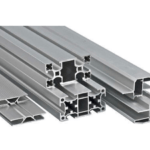Waterway dredging is a critical process for maintaining navigable waterways, preventing flooding, and supporting marine infrastructure. From harbors and rivers to estuaries and canals, dredging helps remove excess sediments that hinder water flow and vessel movement. However, despite its importance, dredging operations often face a variety of technical, environmental, and logistical problems. These issues not only delay project completion but also lead to increased costs and ecological concerns.

Understanding the problems that occur during waterway dredging is essential for stakeholders involved in maritime infrastructure, coastal development, and environmental protection. This article explores the common waterway dredging challenges and provides actionable solutions for minimizing risks and improving project outcomes.
Environmental Issues in Dredging
One of the most significant concerns in any dredging project is its impact on the environment. Environmental issues in dredging are closely monitored by regulatory bodies and can cause major setbacks if not properly addressed.
- Disruption of Aquatic Ecosystems– Dredging disturbs the natural habitat of marine organisms, especially benthic species living in sediments. The suction and removal of substrate materials can destroy breeding grounds and displace wildlife.
- Resuspension of Contaminants– In industrial or urban areas, sediments often contain pollutants such as heavy metals, hydrocarbons, or chemicals. Dredging stirs these up, releasing them into the water column and potentially contaminating surrounding ecosystems.
- Sediment Disposal Problems– Handling and disposing of dredged materials pose additional environmental risks. If the materials are contaminated, they require specialized treatment or containment. Poor disposal practices can result in long-term ecological damage.
To mitigate these environmental issues, comprehensive Environmental Impact Assessments (EIAs) must be conducted before dredging begins. Solutions include using silt curtains, real-time turbidity monitoring, and choosing environmentally friendly dredging techniques.
Technical and Operational Problems
Dredging is a mechanically intensive operation involving specialized equipment, vessels, and skilled labor. Naturally, technical and operational problems are among the most frequent causes of inefficiency and cost overruns.
- Equipment Failures– Machinery breakdowns are a common cause of dredging operational problems. Cutter suction dredgers, hopper dredgers, and other equipment can suffer from wear and tear, clogging, or breakdowns due to harsh marine environments.
- Navigation Obstructions– Unexpected obstructions like submerged rocks, debris, or shipwrecks can damage equipment or halt progress entirely. Without accurate hydrographic surveys, such risks may go undetected until operations begin.
- Inaccurate Site Assessments– Underestimating sediment volume or misjudging the substrate type can lead to significant delays and additional costs. Accurate data collection is essential for proper project planning and execution.
Addressing these operational challenges requires investment in modern equipment, thorough site analysis, and proactive maintenance schedules.
Dredging Project Delays: Causes and Impacts
Project delays are one of the most costly problems that occur during waterway dredging. They can result in contractual penalties, lost revenues, and logistical nightmares.
- Weather-Related Interruptions– Adverse weather conditions like high winds, heavy rains, and storms can halt operations. Seasonal patterns should be factored into the project schedule.
- Permitting and Regulatory Delays– Obtaining necessary permits can be a lengthy process. Inadequate documentation, environmental opposition, or changes in policy can stall project initiation.
- Budgetary and Funding Issues– Dredging is capital-intensive, and financial shortfalls can abruptly stop or slow down a project. Unexpected costs, such as environmental mitigation, often strain limited budgets.
Effective planning, contingency budgeting, and maintaining strong communication with regulatory authorities are key to minimizing delays.
Sustainable Solutions In Labelling.
Common Issues in Dredging Projects
In addition to technical and environmental challenges, there are several common issues in dredging projects that stem from inadequate planning and stakeholder coordination.
- Poor Volume Estimations– Overestimating or underestimating the sediment volume leads to supply chain inefficiencies, extended timelines, and contract disputes.
- Lack of Integrated Project Planning– Many projects fail to consider downstream activities such as sediment transport, disposal, or post-dredging monitoring. This fragmented approach can result in major oversights.
- Community and Stakeholder Opposition– Local communities often resist dredging due to environmental concerns or lack of information. Opposition can escalate into legal challenges or public relations crises.
Involving stakeholders early, conducting detailed project scoping, and using data-driven modeling can help avoid these pitfalls.
Dredging Risk Management and Mitigation Strategies
A proactive dredging risk management approach is crucial for handling the multifaceted challenges associated with these complex projects.
- Pre-Project Risk Assessments– Identify potential hazards, technical limitations, and environmental risks early in the planning stage. Use probabilistic modeling to evaluate different scenarios.
- Advanced Technology Integration– Tools like Geographic Information Systems (GIS), sonar mapping, and real-time data monitoring help mitigate technical uncertainties and improve accuracy.
- Stakeholder Engagement Plans– Transparent communication with local communities, environmental groups, and government authorities can reduce resistance and foster collaboration.
- On-Site Monitoring and Feedback Loops– Establishing feedback mechanisms during operations enables rapid response to unforeseen issues and continuous improvement.
When effectively implemented, risk management significantly enhances project predictability and safety.
Effective Solutions to Dredging Problems
To counter the array of dredging problems and solutions required, industry leaders are turning toward innovation and sustainability.
- Sustainable Dredging Techniques– Methods like water injection dredging or using environmentally friendly vessels reduce ecological impact and carbon emissions.
- Improved Equipment Design– Modern dredgers are being equipped with sensors, automation, and AI systems to enhance efficiency, minimize downtime, and reduce human error.
- Strict Environmental Protocols– Implementing mitigation measures such as sediment containment systems and eco-dredging strategies protects biodiversity and complies with regulations.
- Training and Workforce Development– Ensuring that staff are well-trained in both technical and safety standards improves operational performance and reduces accident risks.
Adopting a multi-pronged approach to dredging risk management, equipment modernization, and environmental stewardship is essential for long-term success.
Conclusion
Waterway dredging is a vital yet complex operation that supports economic development, trade, and environmental management. However, numerous waterway dredging challenges-ranging from environmental concerns and operational breakdowns to regulatory delays-can jeopardize project outcomes.
Addressing the problems that occur during waterway dredging requires a balanced strategy that incorporates risk management, technological innovation, and environmental responsibility. By proactively identifying and solving dredging operational problems, project stakeholders can ensure that dredging operations are not only efficient but also sustainable and compliant with evolving regulatory standards.
As the industry advances, a continued focus on integrated planning, community engagement, and eco-friendly practices will be key to overcoming the most common issues in dredging projects.






